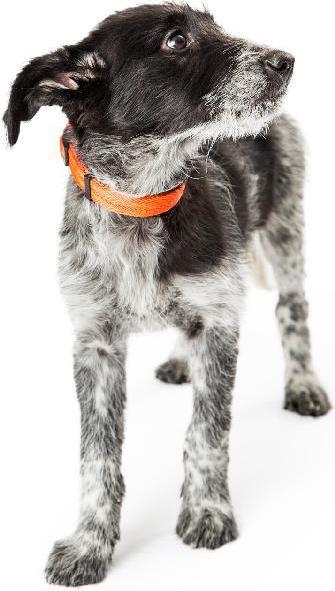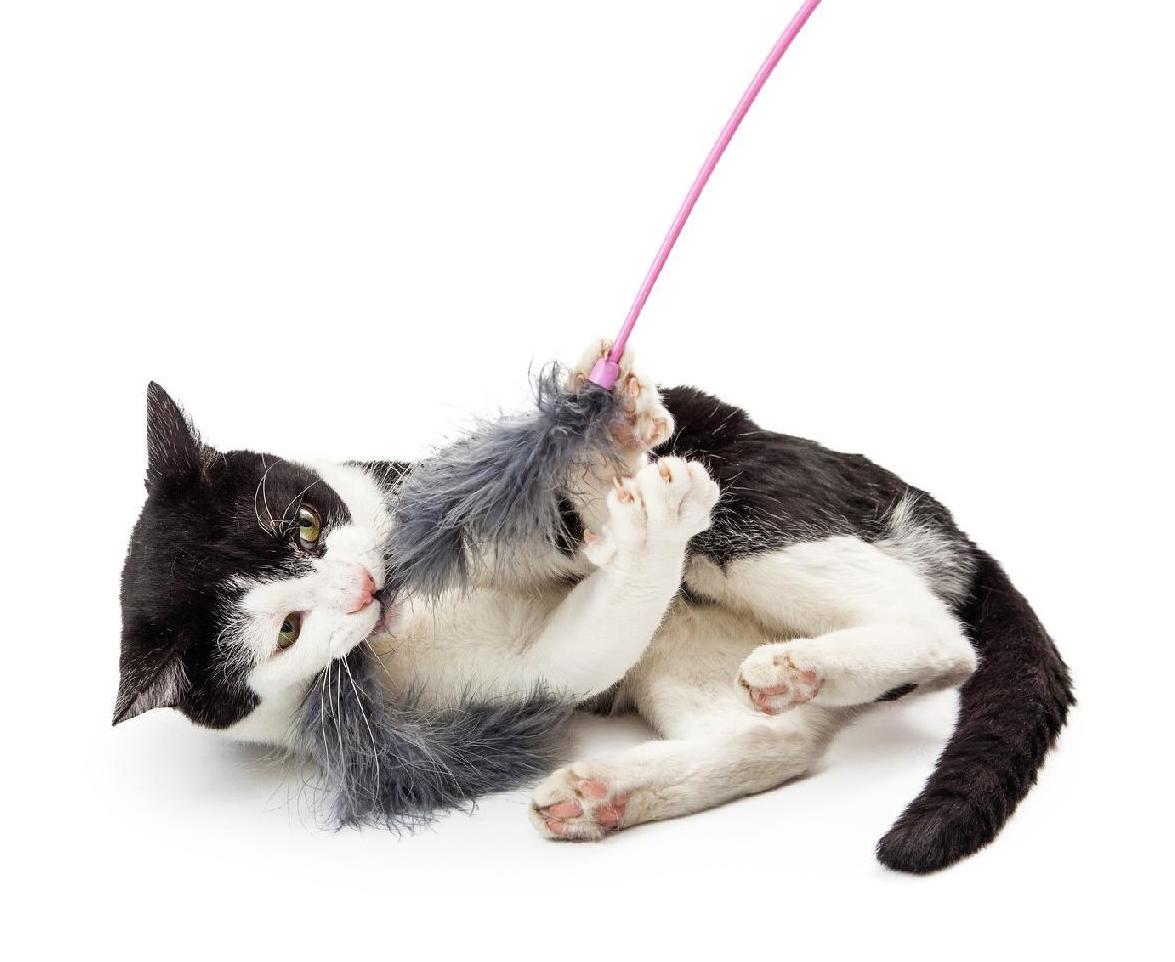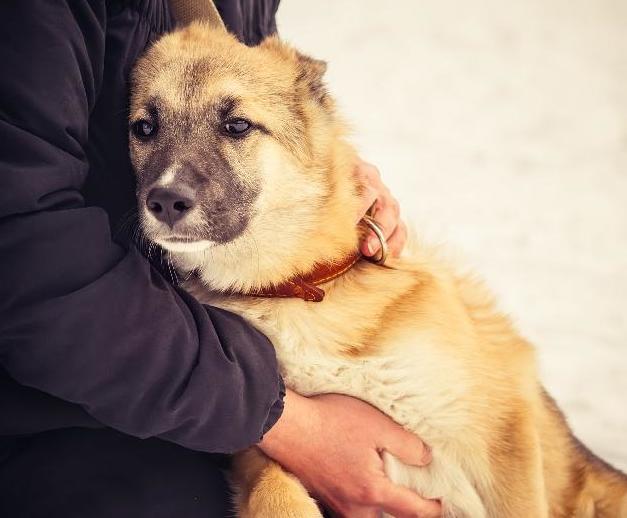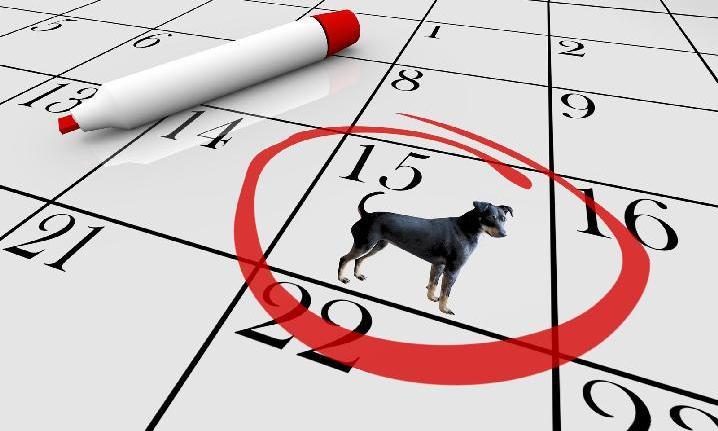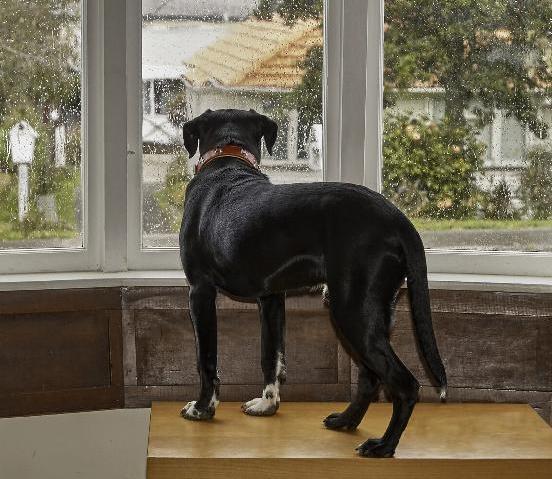
11 minute read
anxiety- and pain-induced, dog-directed aggression
c a n i n e Predictive Detective Work
Anna Bradley looks into why dogs do what they do with a focus on predictive cues and the need to identify the most subtle of environmental triggers
Advertisement
© Can Stock Photo / ChandraSekar A dog’s anxiety may begin to heighten long before his guardians’s departure, becoming confirmed when the door is closed and he is left alone
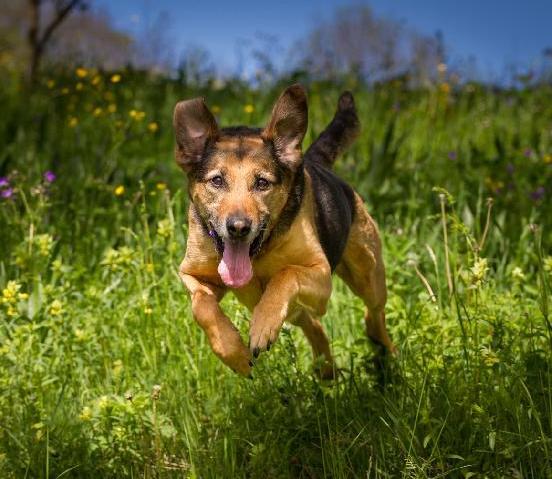
Ioften hear my clients say they don’t understand why their dog is doing this or that, or that there’s no reason or cause for the behavior at all. But of course, there is always a cause for a dog to behave in a certain way, no matter how perplexing it may seem.
Sometimes, to get to that root cause, we have to don our best detective gear because it’s not always easy to figure it out. In this article, I’m going to focus on one such behavior, often described by my clients as “bizarre” or as having “no apparent cause,” firstly because it seems to occur so often (dogs are quick to link cause and effect), secondly, because it actually amazes me how outlandish some of these connections can become, and thirdly, because my young dog has tried and tested some of these connections herself recently. What I’m referring to is how dogs form links and associations, and ultimately engage in prediction.
Many of us follow a pattern in our daytoday lives in that we may go to work Monday to Friday, for instance. On Sunday, then, we can predict that on Monday we’ll be back to our usual routine and may spend some time preparing for the upcoming working day, like finishing off some paperwork, deciding what to wear, or filling the car with gas. What we must also remember is the emotional context. What do we feel when we engage in these behaviors? On Sunday evening (depend
© Can Stock Photo / buchsammy Dogs form links and associations which can lead to predictive behavior that may not always make sense to their guardians
ing on how one feels about one’s job!), we may feel a little sad at leaving the weekend behind, depressed at the thought of a long week ahead or possibly delighted at the prospect of all the challenges. Bound within the physical aspect of what we predict we will actually do, there is a huge element of how we will feel, and it is just the same for dogs.
Example Behaviors
Let’s now look at some of the behaviors that can be attributed to prediction. Something we probably all see is the dog who becomes incredibly excited at the sight of the leash. Sometimes just putting on your coat or picking up the house keys becomes linked with picking up the leash and taking pup for a walk. Things like this can get connected very quickly and become predictive cues, resulting in commonly encountered behaviors of jumping, bouncing, vocalizing etc. that are symptomatic of the dog’s excitement at the impending walk.
Consider, though, a contrasting emotional response, like what we may see in cases of separation related disorders. Instead of excitement, the sight of a guardian gathering their things and engaging in a specific leaving routine can quickly become linked to feelings of anxiety. This anxiety may begin to heighten long before the guardian’s departure, and is confirmed when the door is closed and the dog is left alone. Resulting symptoms can include urination, defecation, vocalization, destruction, hypervigilance etc. (see also Alone Training on pp.32‐33).
In my experience, examples such as these are frequently encountered and commonly reported yet are detached from the actual cause. A dog’s guardian may report that their dog “acts weird for no reason” when they leave the house, or their dog “goes nuts whenever we go for a walk.”
There are more obscure connections too. Take, for instance, the dog who happily goes for a walk, but then for no apparent reason balks at a specific spot. This may appear to be completely random or even a little bit spooky, but closer inspection may reveal that the dog has learned that the leash is clipped back on at that particular spot, signaling the end of the fun. Or, perhaps a few houses further along he has to walk past a scary situation like a dog rushing the fence. In instances like this, the specific location becomes a predictive contextual cue and could also become a predictive cue for anxiety.
Subtle Clues
The predictive cues of separation anxiety can be particularly subtle. I recall one case I had several years ago of a dog who exhibited stress when her guardian left the house. It was only after a really indepth examination that we discovered the scent of the lady’s perfume was the trigger for the dog’s anxiety. The lady only applied the perfume when she was leaving the house and that scent became a predictive emotional cue for the dog’s anxiety.
From time to time I also encounter dogs who are labelled “aggressive” by their guardians. I recall one case of a spaniel who would not allow his guardian to brush his face. This dog had experienced a great deal of pain over the past year due to chronic ear mites and his guardian had continued trying to brush him. Even though the initial medical issue was resolved, the dog retained the memory trace of the brush being predictive of pain.
I also take the example of my young dog. At just 15 months of age, she enjoys playing with other dogs. When she sees them, she will rush off to join in. Unfortunately, over just a few repetitions of my being neglectful of timing a recall cue (calling when she ran to another dog), she has learned that the recall cue is a prediction that fun with other dogs might be about to happen! I hasten to add she’s improving now, but this is a lesson well learned in timing and shows just how quick dogs can be in forming associations.
Classical Conditioning
There are many, many examples I could cite of predictive behaviors – far too many for this article. But why do they happen? In many instances, think classical conditioning. In the case of the spaniel disliking the brush, his attempts to bite his guardian and/or the brush are not at all random or “weird,” because he has learned that all touch equals pain due to his previous chronic ear condition. Add in the brush and the brush quickly becomes a conditioned stimulus. Because it is associated with pain, it becomes something to be avoided, leading the dog to adopt distanceincreasing “aggressive” behavior.
The same is true with my young dog. She knows that playing with her doggy friends is great fun. Being sloppy with the recall cue, I was adding it in when she was in the middle of running off to play with her friends, which is really exciting for her. After only a few repetitions, the recall cue began to predict that some fun may have been about to happen. The result was that she was actually running off looking for fun when I called her back, rather than coming back to me!
Of course, we can also inadvertently strengthen our dogs’ behavior. By following through with what they predict will actually happen, we reinforce the cycle and perpetuate the link. We may get annoyed if our dogs get overexcited and pull at a particular spot when we’re walking to
ANIMAL COURSES DIRECT


a field because they predict they will be allowed off leash. Yet we continue to reinforce this behavior by letting them off leash because it saves our arm!
Escape/Avoid
Dogs will also work to avoid or escape a stimulus they perceive to be undesirable for whatever reason. So the dog who balks on a walk is not “being difficult” and does not need to be (and should not be) forced or coerced into walking, or punished for not doing so. Another example: Some clients of mine take their dogs to an area where they can run off leash, but at a certain point the dogs will stop and refuse to go any further. The dogs will then run in a particular direction back to their guardians for a reward, always to the left and always doing the exact same thing when in this location. The guardians found this initially very odd behavior, as did I. Eventually we worked out the reason for it. There is a train track close by and the ground vibrates at that specific spot. The dogs quickly learned that avoiding that spot (which evoked symptomatic anxiety) completely and returning in a wide, safe circle for a treat, was more beneficial – and pleasant – for them. Thus, they repeated this every single time they were walked in that field.
Real Life Consequences
Unfortunately, dogs are sometimes stigmatized for behaving in an “unexplained” way. Humans can be too quick to label dogs because we do not understand the full situation. In the worst instances where dogs have exhibited supposedly unexplained aggression, I have received cases due for euthanasia. This makes me especially sad because it really does demonstrate a lack of regard and understanding of these dogs.
Treatment first and foremost involves recognition that something is going wrong and that there is an underlying cause. It is imperative that we take a long hard look at exactly what is happening and work backwards from there. What is the driver for the behavior? What does the dog feel? What does she get out of the behavior? What does the guardian add to the situation? How do they react? How does the dog respond to the guardian? All of these things need to be considered.
The difficulty with predictive behaviors is that they can proliferate fast. There is the primary link (leash = walk), then comes the secondary link (put coat on + leash = walk), the tertiary link (go to cupboard + get coat + leash = walk) and so forth. Essentially, we need to unravel each link of the chain, remove reinforcement and perhaps add in a new substitute behavior at each stage and reinforce that instead. Environmental management, situation avoidance, and treatment of acute and chronic pain are also paramount in terms of extinction and behavioral welfare.
Ultimately, detective work and careful analysis are involved in identifying and treating what can look like completely out of character or illogical behavior, but there is always a cause. We just owe it to our dogs to work it out. n
Anna Francesca Bradley MSc BSc (Hons) is a United Kingdomebased provisional clinical, certified IAABC animal behavior consultant and ABTC accredited behavior consultant. She owns Perfect
Pawz! Training and Behavior Practice in Hexham, Northumberland, where the aim is always to create and restore happy relationships between dog and guardian in a relaxed way, using methods based on sound scientific principles, which are both force-free and fun.
P is for...
The A-Z of Training and Behavior Brought to you by

Pack Theory: A theory based on wolf research that states that pets form linear hierarchies led by alphas. This term has been inaccurately used to describe canine groups and label specific behaviors. Pack theory in wolves and the term ‘alpha’ has largely been replaced by the terms family unit and breeders or breeding pair.
Pair or Pairing: The process by which associative learning, also known as respondent conditioning, takes place. One stimulus is associated with another and reliably predicts the other stimulus. Ex. The click is paired with the treat.
Parallel Play: When two pets engage in similar play, not with each other but simultaneously.
Pattern Training: Also called patterning or overlearning. Doing a large number of repetitions in the high hundreds to low thousands, in an attempt to “program” a pet into responding a specific way.
Ping-Ponging: This term was first referenced in print by Morgan Spector in “Clicker Training for Obedience.” Pingponging refers to bouncing your criteria gently back and forth while still slowly increasing it.
Poisoned Cue: A cue trained with negative reinforcement will become a negative discriminative stimulus. A cue trained with positive reinforcement will become a positive discriminative stimulus. Therefore, a cue trained with unpleasant consequences is “poisoned” because it does not take on reinforcing properties.
Positive Training: A training philosophy where the trainer utilizes positive operant and respondent conditioning protocols as their go-to choice.
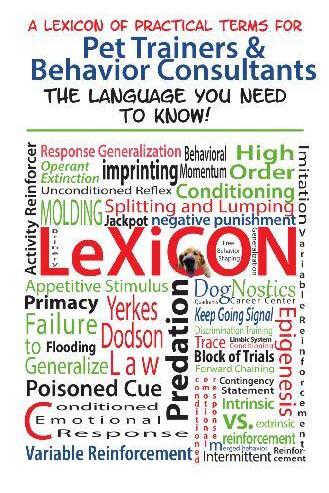
From: A Lexicon of Practical Terms for Pet Trainers & Behavior Consultants: The language you need to know! by DogNostics Career Center. Available from: dognosticseducation.com/p/store


